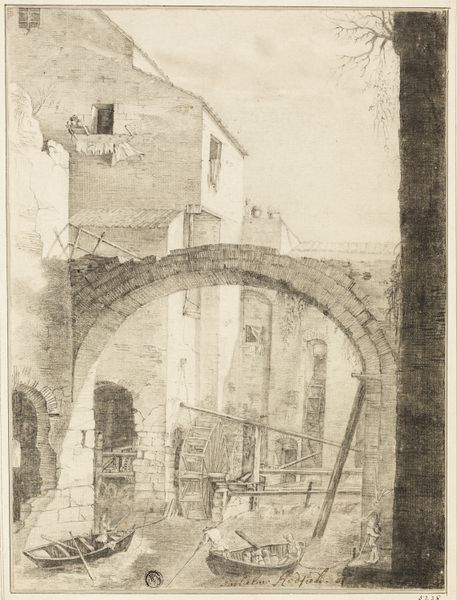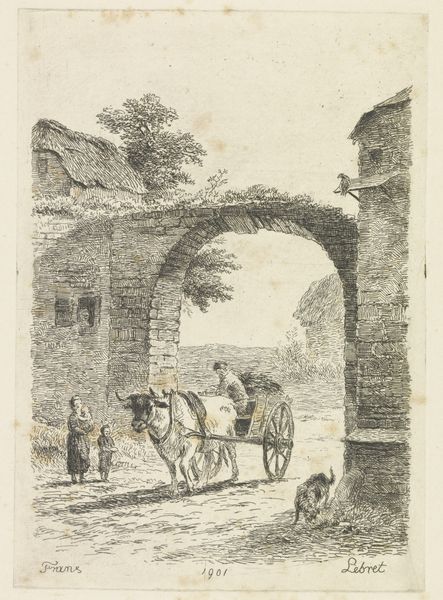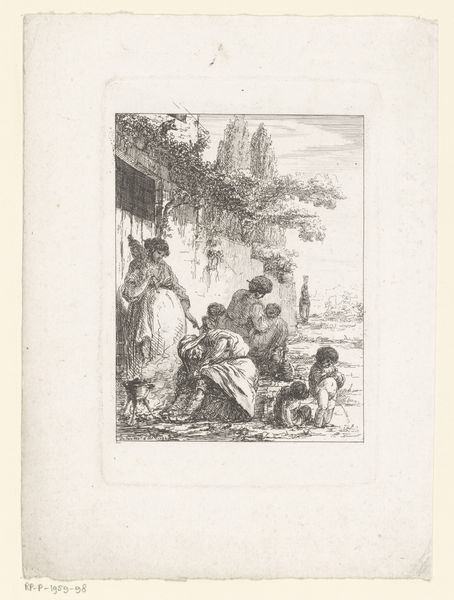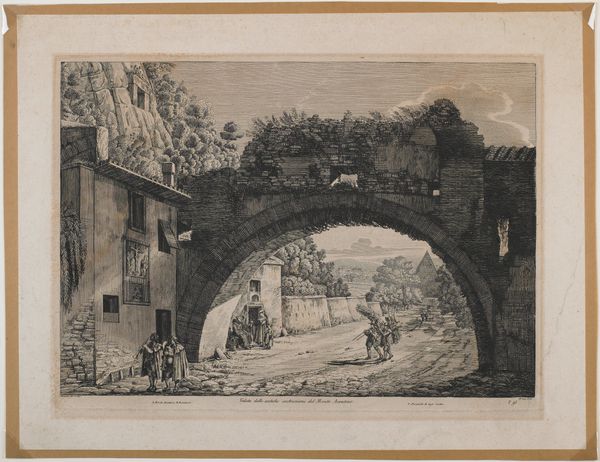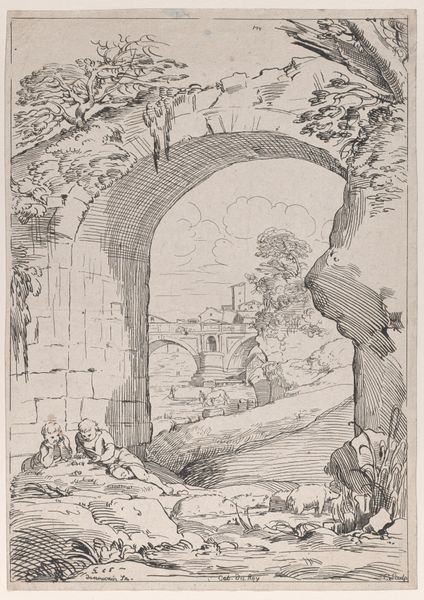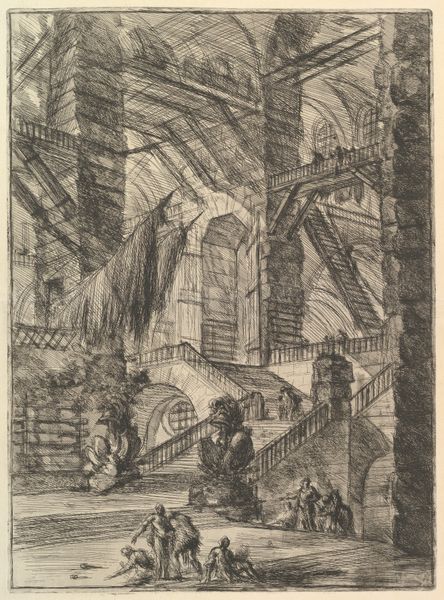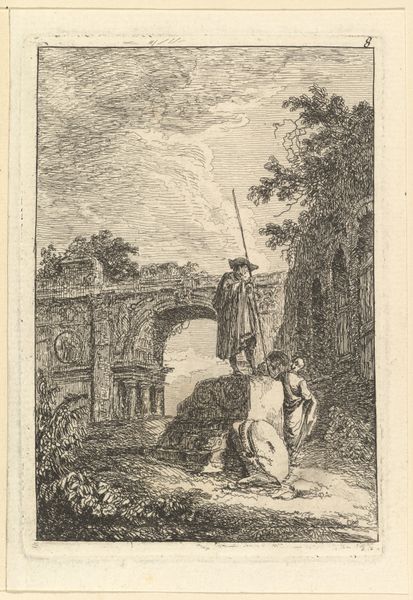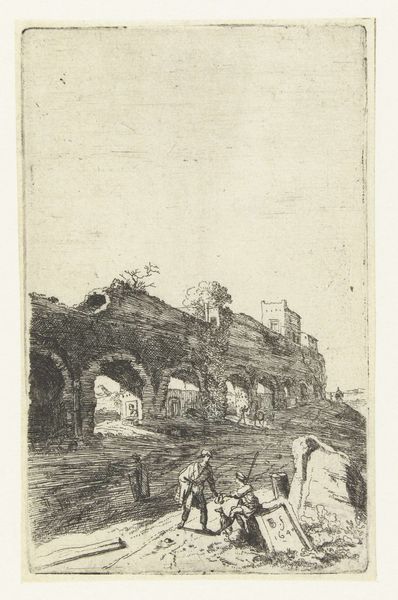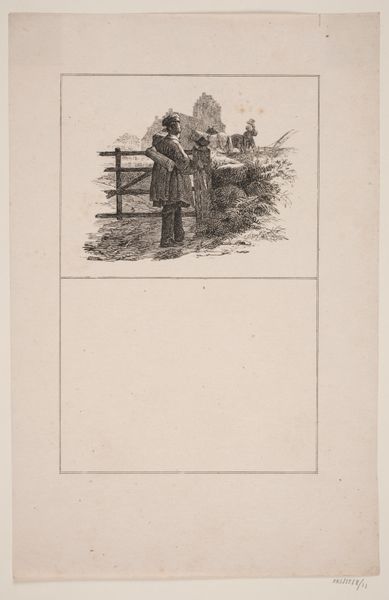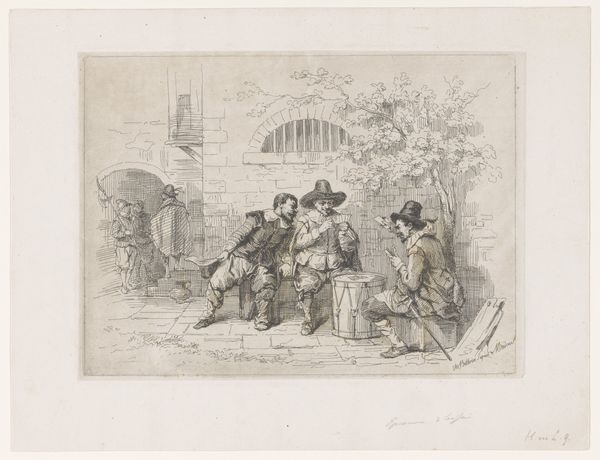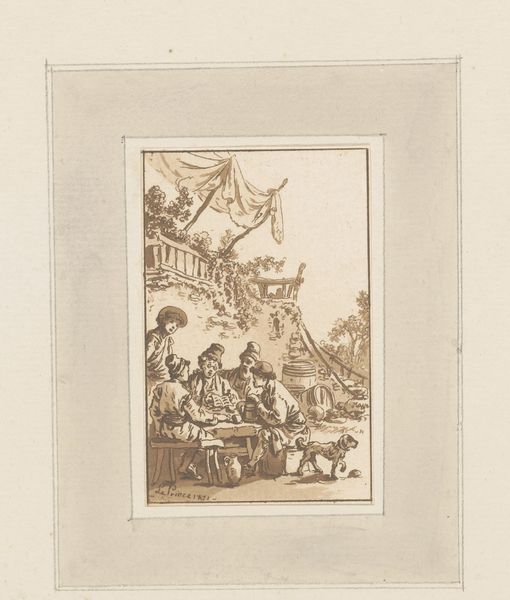
drawing, print, etching, paper
#
drawing
# print
#
etching
#
landscape
#
paper
#
cityscape
Dimensions: 226 × 192 mm (image); 233 × 197 mm (plate); 246 × 212 mm (sheet)
Copyright: Public Domain
Curator: Let's take a look at Auguste-Louis Lepère's etching, "Woolcarders at Pont Marie," created in 1891. Editor: The immediate effect is almost claustrophobic. That enormous archway dominates the composition. Curator: Absolutely, the artist plays with depth and perspective here. It is fascinating to consider the printmaking process itself. Etching allows for such intricate linework, demanding careful handling of materials like the etching needle, acid, and printing press. Each pull of the print offers a subtle variation; a single manipulation with far-reaching implications for what we can learn about social practice. Editor: Beyond the technical aspect, what interests me is how the piece functions within the broader context of late 19th-century Parisian society. Lepère focuses our attention on a section of laborers and, in effect, shines a light on the city's workforce that society tried to forget or cover up. Curator: Precisely, look closely at the tools and techniques depicted. We're seeing wool carding—the process of preparing wool fibers before spinning—a very tangible representation of the labor involved in textile production. The labor, of course, impacts market price and consumption; understanding the economic flow is essential. Editor: And positioned almost in the shadow of the Pont Marie, they’re literally on the margins of Parisian life, although they certainly support its economy. Curator: Note too how the figures are framed by the imposing stone structure, emphasizing their connection to both the city's architecture and its economic foundations. The arch looms like a gate to something more prosperous. Editor: It prompts you to think about what these figures saw, experienced, and endured. By documenting their lives and situating their profession beneath that archway, the artist grants a presence to those who were, too often, rendered unseen. Curator: The material of the artwork and material in the artwork intertwine to comment on human ingenuity and backbreaking work that creates civilization as a process, rather than just inheriting it as a historical given. Editor: Lepère truly invites us to see Paris, and its art, through a different lens. Curator: Yes, by emphasizing material, the viewer truly comprehends how historical interpretation rests as much on artifacts as cultural accounts.
Comments
No comments
Be the first to comment and join the conversation on the ultimate creative platform.
